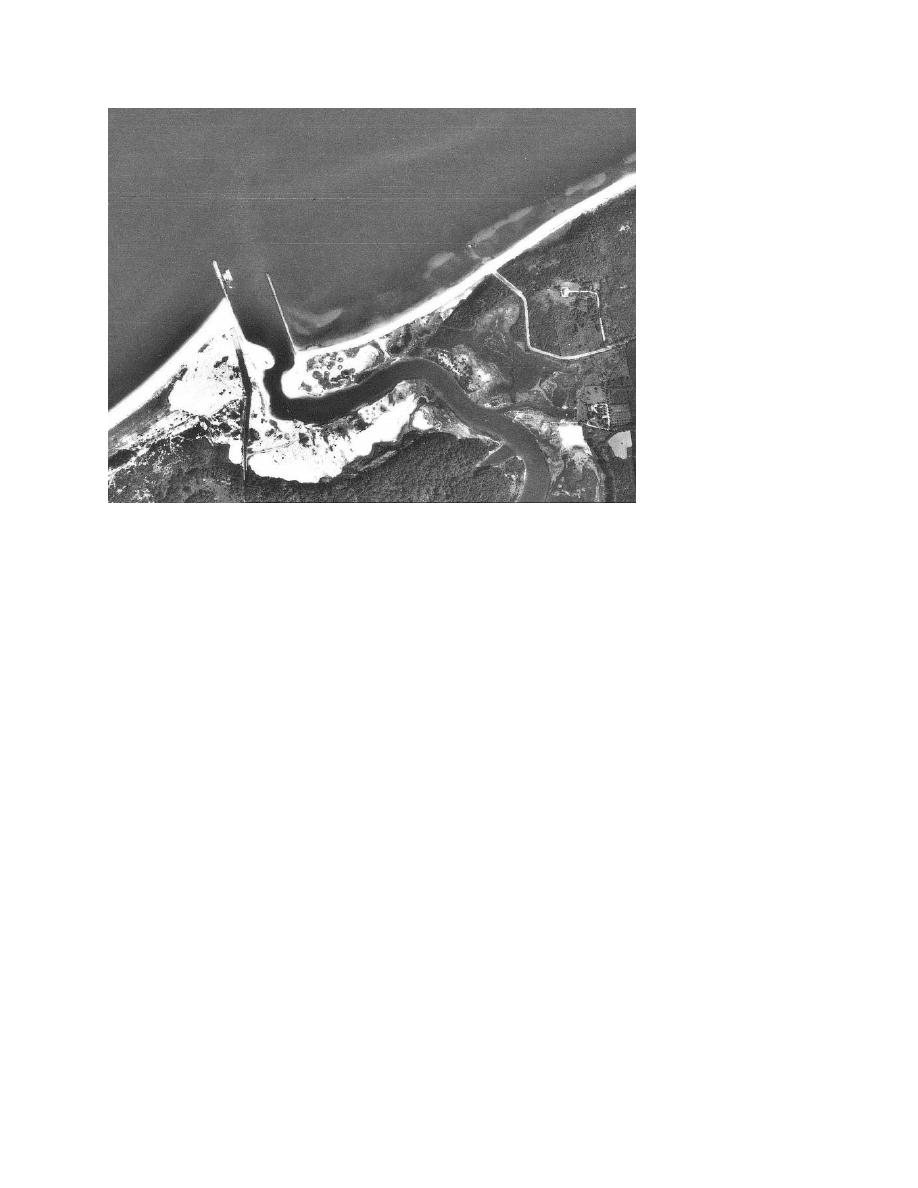
Figure 2.
Mattituck Inlet, NY, with a spit encroaching from the east (from
right side in the photography) through a breach in the barrier island
Breaching updrift of jetties. A porous jetty near the shore or a jetty that does not extend
sufficiently landward to avoid flanking will promote erosion of the updrift beach by allowing
sediment to enter the inlet through or behind it. In such a situation, the inlet blocks sediment
arriving to the updrift beach during times of reversals in longshore transport, whereas a portion
of the sediment brought to the beach from the dominant longshore transport direction passes
through or around the jetty. The result is that the updrift beach can erode, and the shoreline will
recede.
A strong rip current adjacent to the updrift jetty can also remove material from the beach, acting
similarly to a porous jetty in causing local beach erosion. If the barrier island adjacent to the spit
is narrowed by bank erosion in the tidal channel at the back bay (Seabergh 2002), as was the case
at Moriches Inlet, NY, discussed below, or by formation of a headland bay beach as was the case
at Grays Harbor, WA, in 1993, then breaching potential is increased during times of high water
level and high storm waves. Such inner bank erosion can occur either updrift or downdrift, or on
both sides, of the inlet.
Perdido Pass, FL, is an example of breaching that occurs on the updrift side of the inlet because
the jetty does not extend sufficiently landward (Figure 3). The updrift (east) beach adjacent to
the east jetty is monitored and filled by the U.S. Army Engineer District, Mobile, to prevent
further opening of breaches that occasionally occur there, such as after 2004 Hurricane Ivan.
4


 Previous Page
Previous Page
